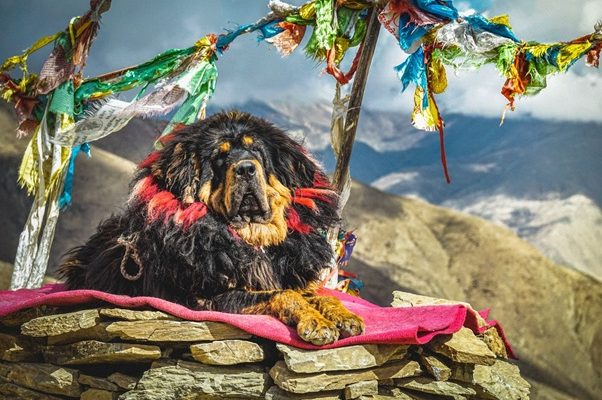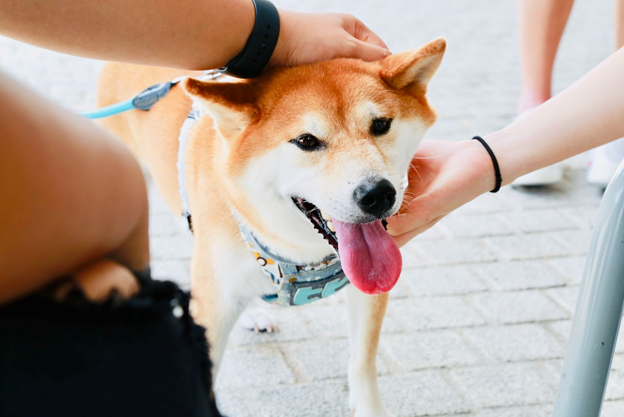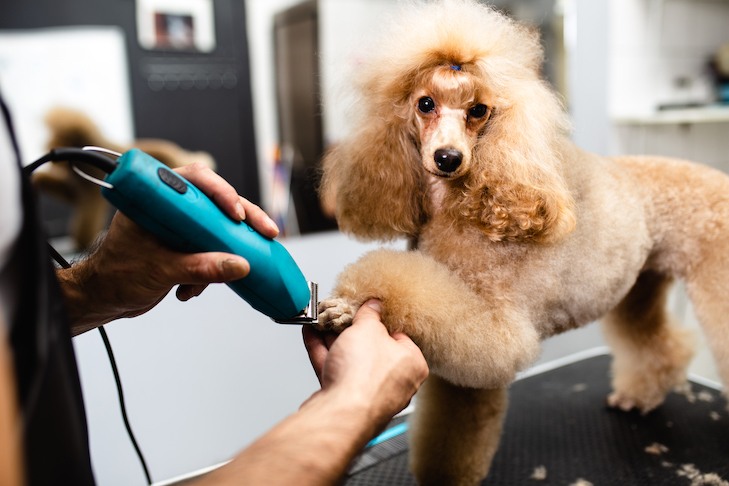
Dog breeds vary enormously across the globe. They come in all shapes and sizes, from the tiny Maltese Shih Tzu to the towering Labradors Retrievers who’s very popular for dog breeders. The diversity of dog breeds means there are anywhere between 200 to 500 dog breeds recognized worldwide – some breeds are familiar and commonplace while others are rare and unusual, boasting unique traits, backgrounds, and temperaments. Let’s explore six of the world’s most unique and rare dog breeds, diving into their histories, unique traits, and what it’s like to own these intriguing canines.
6 of The World’s Most Unusual Dog Breeds
1. Azawakh
Originally from the West African nations of Burkina Faso, Mali, and Niger, the Azawakh is a sighthound that’s often used by nomadic tribes for hunting and guarding. This breed is named after the Azawakh Valley and is sometimes known as the Tuareg Sloughi, referring to the Tuareg people of the Sahara.
Unique Traits: The Azawakh is tall and slender, with an elegant, gazelle-like appearance. The breed is known for its remarkable speed, endurance, and agility, traits that were crucial for survival in the harsh desert environment from which it originated. They have an unusual gait, moving with a light, springy trot.
History: Azawakhs have a deep history, with archeological evidence suggesting their existence in what’s now the Sahara Desert for over a thousand years. This breed has traditionally been used for hunting gazelle and hare, their speed and sight making them excellent at tracking and catching prey.
Ownership Experience: Azawakhs form strong bonds with their families and are known to be protective, making them excellent guard dogs. However, they can be reserved around strangers and need early socialisation to ensure they grow up to be well-rounded dogs. Despite their high energy levels, they can adapt well to apartment living as long as they get enough exercise.
2. Tibetan Mastiff
The Tibetan Mastiff is a breed shrouded in history and majesty, known for its imposing size and stoic demeanour. Bred and developed in the harsh conditions of the Himalayas, these dogs possess a unique combination of power, ruggedness, and independence. Historical records suggest they have been associated with the Tibetan people for centuries, serving as livestock guardians, protecting herds, homes, and monasteries from predators like wolves and snow leopards.
Unique Traits: This breed is known for its thick double coat, mane-like fur around the neck, and substantial body size. The Tibetan Mastiff can weigh up to 150 pounds and reach up to 26 inches in height.
History: The Tibetan Mastiff is an ancient breed with a history stretching back thousands of years. It is thought to have been used by nomadic tribes in Central Asia and was known for its strength and fearlessness in defending livestock from predators like wolves and leopards.
Ownership Experience: Owning a Tibetan Mastiff can be a rewarding experience for the right owner. They are fiercely loyal and protective, but also independent and sometimes stubborn. Early training and socialisation are important, and they need a spacious environment to roam.
3. Swedish Vallhund
The Swedish Vallhund, also known as the “Viking Dog,” hails from Sweden and was bred for herding cattle and sheep.
Unique Traits: This breed is notable for its resemblance to the Corgi, boasting a small, sturdy frame, short legs, and a long body. However, unlike the Corgi, Vallhunds have a thicker double coat and a more wolf-like facial structure.
History: The Swedish Vallhund is believed to date back over 1,000 years to the time of the Vikings. The breed was nearly extinct in the 1940s but was saved by Swedish enthusiasts who worked to revive it.
Ownership Experience: Vallhunds are energetic, intelligent, and friendly. They thrive in active homes where they can get plenty of mental and physical stimulation. With their herding background, they can be a little bossy, and they’ll often try to herd family members and pets.
4. New Guinea Singing Dog
The New Guinea Singing Dog is a wild dog breed from the highlands of New Guinea, renowned for its unique vocalisation.
Unique Traits: This breed is small to medium-sized with a fox-like appearance. What truly sets the breed apart is its distinctive and melodious howl, which has led to its ‘singing’ moniker.
History: New Guinea Singing Dogs are thought to have been isolated on the island of New Guinea for thousands of years, contributing to their unique traits. They are extremely rare, both in the wild and in captivity.
Ownership Experience: Singing Dogs are not typical pets. They have retained many of their wild behaviours, making them challenging to own. They are highly intelligent and require a lot of mental stimulation, but they can be aloof and independent.
5. Norwegian Lundehund
The Norwegian Lundehund, also known as the Puffin Dog, is a small dog breed from Norway specifically bred for hunting puffins and their eggs.
Unique Traits: Lundehunds possess several unique physical characteristics: they have six toes on each foot for better grip on steep cliffs, flexible necks that can crane backward, and ear control that allows them to fold their ears shut to protect against dirt and moisture.
History: This breed’s history dates back hundreds of years to the remote islands of Arctic Norway. The need for puffin hunters declined when new methods for collecting puffins were invented, nearly leading to the breed’s extinction in the 20th century. Breeding programs have since revived the Lundehund population, but they remain rare.
Ownership Experience: Lundehunds are cheerful, energetic, and agile pets. They can be stubborn and challenging to train due to their independent nature. This breed needs plenty of exercise, and their climbing abilities should be taken into account when securing yards and homes.
6. Peruvian Inca Orchid
The Peruvian Inca Orchid, also known as the Peruvian Hairless Dog, is a breed originating from Peru and can be traced back to pre-Incan cultures.
Unique Traits: Most noticeable about the Peruvian Inca Orchid is its hairlessness, although a coated variety exists. The skin can be of any colour, often mottled. They have a slim build, almond-shaped eyes, and large, bat-like ears.
History: These dogs are depicted in artefacts of the pre-Inca cultures dating back over a thousand years. Considered a part of Peru’s cultural heritage, there are efforts in place to protect and preserve the breed.
Ownership Experience: Peruvian Inca Orchids are intelligent, affectionate, and loyal dogs. They do well in active families where they can be involved in day-to-day activities. Their hairless skin requires special care, including protection from the sun and cold, and regular skin care to prevent acne and blackheads.
Conclusion
While these six breeds may be rare and unusual, each has its unique charm and character. They remind us of the extraordinary diversity and adaptability of dogs, having evolved alongside humans in a myriad of environments and roles. These breeds offer fascinating insights into canine diversity and the myriad ways humans have relied on their four-legged companions throughout history.











